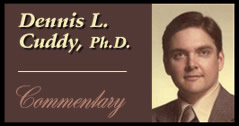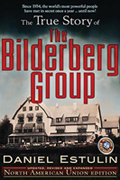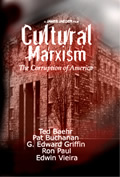SOCIALIST SUNDAY SCHOOLS
By
Dennis L. Cuddy, Ph.D.
April 4, 2011
NewsWithViews.com
In Kenneth Teitelbaum’s Schooling for “Good Rebels”: Socialist Education for Children in the United States, 1900-1920, he describes the formation of 100 “Socialist Sunday Schools” (SSS) "in 64 cities and towns in various parts of the country, and with probably more than ten thousand children attending between 1900 and 1920." These SSS included children from 5 to 14 years of age, and usually met for about two hours on Sunday mornings.
The purpose of the SSS was “to contest more directly the overly individualistic, competitive, nationalistic, militaristic… themes prevalent in contemporary public schools and other social institutions,” and help in “supplanting capitalist social and economic relations with a more equitable and cooperative form,” namely Socialism. Interestingly, in the latter part of the 20th century, Outcome-Based Education (OBE) would emphasize the group over the individual, cooperative learning over competition, global perspectives increasingly and nationalism less, peacekeeping over militarism, and equity over superiority.
The strategy of the SSS followed that of revolutionary Antonio Gramsci, in that hegemony would be attained via the people’s consent rather than by force. The people would gradually adopt Socialism voluntarily via a “process” (like OBE), and the result would be a “Cooperative Commonwealth.” The SSS were allied with the Intercollegiate Socialist Society (ISS), which would be renamed the League for Industrial Democracy in 1921 and have “progressive” educator John Dewey as its president in 1940-41 (OBE is based on “progressive education” principles).
The ISS in the U.S. was related to the Fabian Socialists of Britain, and British influence upon the ISS was significant. The Fabians’ motto was “Educate, Agitate, Organize,” and these were the same principles followed by American radical Saul Alinsky, who is admired by Hillary Clinton and President Barack Obama. Shortly after Alinsky’s Rules for Radicals (with an acknowledgment to Lucifer at the front) was published, Ronald and Mary Havelock’s Training for Change Agents was published in 1973 with portions developed under a federal Office of Education contract. In this latter book is described the activities of “The Advocator-Organizer-Agitator” and the “Social Architect” change agents. And in the Spring of 1974, the federal Office of Education gave a grant of $5.9 million for 500 “change agents” to be trained at 21 institutions of higher education around the U.S.
In the 1970s, Marc Tucker would become an associate director of the National Institute of Education within the federal Office of Education, and in 1985 he would become president of the Carnegie Forum (now National Center) on Education and the Economy (NCEE). The NCEE would have Hillary Clinton on its board.
Hillary Clinton’s activism in “progressive education” was not unlike the activism of Socialist women in the early part of this past century, as many of the SSS were initiated by women activists. For example, a Socialist women’s club began the SSS in Rochester, N.Y. on October 2, 1920 at the Socialist Party headquarters. Interestingly, in the 1980s, NCEE virtually took over the Rochester public school system with the result being that on May 7, 1995, Rochester’s Democrat and Chronicle reported that “Forty percent of ninth-graders don’t make it through high school. Fewer graduates attain the state’s more stringent Regents diploma. Most middle and high school test scores remained flat or declined. Teams of administrators, teachers and parents formed to improve schools often didn’t work well together…. Middle schools, created to cater to the needs of early adolescents, are large, chaotic, and occasionally, violent. ‘We have failed,’ said Mayor William A. Johnson, Jr.”
When Rochester’s SSS began, “The Red Flag” was sung, and Superintendent Kendrick Shedd later wrote: “We were to inspire the young… to be good Socialists.” A few years later, he said “the kids are learning to be good rebels,” which would pay off in fifteen years, “when the revolution shall have waxed very hot.” There was a strong German Socialist community in Rochester in the early 20th century.
In a November 11, 1992 letter to Hillary Clinton, NCEE president Marc Tucker wrote: “We propose that Bill [Clinton] take a leaf out of the German book. One of the most important reasons that large German employers offer apprenticeship slots to German youngsters is that they fear, with good reason, that if they don’t volunteer to do so, the law will require it. Bill could… do the same…. Radical changes in attitudes, values, and beliefs are required to move any combination of these agendas.” Remember the earlier statement about the SSS following Gramsci’s model for “voluntary” acceptance of hegemony.
Superintendent Shedd’s philosophy included an element of Fabianism as well as Marxism. And similar to Hillary Clinton’s “It Takes a Village to Raise a Child” philosophy, Shedd wrote in 1914 that in addition to his own three children, he also had about “two or three thousand that are also my own, although I am not their real father.” Socialists believe that children belong not just to parents but to the entire society!
In 1911, Shedd had addressed a crowd in Auburn, New York, and was supportive of atheism while being critical of American patriotism, and he indicated that the flag of internationalism was greater than the flag of an individual nation. At his Rochester school, students were taught to be “comrades,” and there was a series of Red Rebel Lessons.
In the Spring of 1915, Shedd went to Milwaukee to organize SSS. Milwaukee had a Socialist mayor, and the superintendent of one of the three SSS formed by Shedd was Rhodes Scholar Carl Haessler (Cecil Rhodes funded the Rhodes scholarships and had formed a secret society “to take the government of the whole world”). The general theme of Milwaukee’s SSS curriculum for 1917-1918 was “cooperation in everyday life,” with lessons that included “being world citizens.” (Barack Obama also called himself a “citizen of the world.”) Large flags of internationalism were spread over the children, who were told, “When we are world citizens, all marching under the banner of international peaceful Socialism, our ignorant nationalistic boastfulness will give way to helpful and enlightened co-operation with other nations.”
Lessons also included that students should know that Karl Marx said “Workers of the world, unite.” The SSS curriculum emphasized “collectivism, internationalism, and interdependence,” and looked forward to the day when there would be “one fatherland” for everyone.
In 1916, Lenin said, “The aim of socialism is the elimination of the fragmentation of humanity in petty states and the individualism of nations—not only the coming closer of nations to each other, but their merger or fusion.”
In 1953, Ford Foundation president H. Rowan Gaither informed a Congressional committee research director, Norman Dodd, that at the executive level of the Foundation, “We are continuing to be guided by such directives [from the White House]…. The substance [of these directives] was to the effect that we should make every effort to make possible a comfortable merger with the Soviet Union.”
And the same year (1985) in which the Carnegie Forum on Education and the Economy began (with Marc Tucker as president), the Carnegie Corporation negotiated the Soviet-American Exchange Agreement, which allowed Soviet educators to participate in the development of curriculum materials to be used in some American schools.
| Subscribe to the NewsWithViews Daily News Alerts! |
The curriculum of the SSS in the early part of this century also taught evolution, and advised students to “not believe that which is contrary to reason” (e.g., religious faith in creation). Today, evolution is promoted by the government schools, and humanistic values have replaced Biblical ones in lessons taught there. In the SSS, students were told: “Be as grateful to your teacher as to your parents.” And today’s progressive educators” see themselves as “partners” with parents in the upbringing of children. The SSS curriculum taught students to take “a generally critical approach toward everyday social life,” and today’s “progressive educators” advocate “critical thinking” for students. The SSS curriculum also included an “anti-militarism” theme, which is similar to today’s “progressive educators” promoting world disarmament.
As “progressive educators” seem to be moving us closer and closer toward a World Socialist Government today, it is noteworthy to look at the parallels between what is occurring in government schools at present (e.g., OBE, “School-To-Work” programs, etc.) and the SSS at the beginning of the 20th century.
� 2011 Dennis Cuddy - All Rights Reserved











 Share
This Article
Share
This Article






